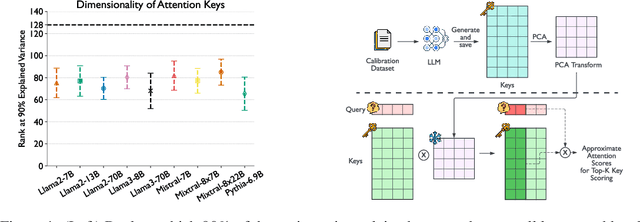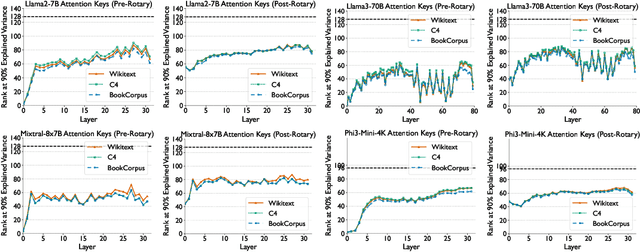Siddharth Singh
Hybrid Robot Learning for Automatic Robot Motion Planning in Manufacturing
Feb 26, 2025Abstract:Industrial robots are widely used in diverse manufacturing environments. Nonetheless, how to enable robots to automatically plan trajectories for changing tasks presents a considerable challenge. Further complexities arise when robots operate within work cells alongside machines, humans, or other robots. This paper introduces a multi-level hybrid robot motion planning method combining a task space Reinforcement Learning-based Learning from Demonstration (RL-LfD) agent and a joint-space based Deep Reinforcement Learning (DRL) based agent. A higher level agent learns to switch between the two agents to enable feasible and smooth motion. The feasibility is computed by incorporating reachability, joint limits, manipulability, and collision risks of the robot in the given environment. Therefore, the derived hybrid motion planning policy generates a feasible trajectory that adheres to task constraints. The effectiveness of the method is validated through sim ulated robotic scenarios and in a real-world setup.
Democratizing AI: Open-source Scalable LLM Training on GPU-based Supercomputers
Feb 12, 2025Abstract:Training and fine-tuning large language models (LLMs) with hundreds of billions to trillions of parameters requires tens of thousands of GPUs, and a highly scalable software stack. In this work, we present a novel four-dimensional hybrid parallel algorithm implemented in a highly scalable, portable, open-source framework called AxoNN. We describe several performance optimizations in AxoNN to improve matrix multiply kernel performance, overlap non-blocking collectives with computation, and performance modeling to choose performance optimal configurations. These have resulted in unprecedented scaling and peak flop/s (bf16) for training of GPT-style transformer models on Perlmutter (620.1 Petaflop/s), Frontier (1.381 Exaflop/s) and Alps (1.423 Exaflop/s). While the abilities of LLMs improve with the number of trainable parameters, so do privacy and copyright risks caused by memorization of training data, which can cause disclosure of sensitive or private information at inference time. We highlight this side effect of scale through experiments that explore "catastrophic memorization", where models are sufficiently large to memorize training data in a single pass, and present an approach to prevent it. As part of this study, we demonstrate fine-tuning of a 405-billion parameter LLM using AxoNN on Frontier.
Scaling up Test-Time Compute with Latent Reasoning: A Recurrent Depth Approach
Feb 07, 2025Abstract:We study a novel language model architecture that is capable of scaling test-time computation by implicitly reasoning in latent space. Our model works by iterating a recurrent block, thereby unrolling to arbitrary depth at test-time. This stands in contrast to mainstream reasoning models that scale up compute by producing more tokens. Unlike approaches based on chain-of-thought, our approach does not require any specialized training data, can work with small context windows, and can capture types of reasoning that are not easily represented in words. We scale a proof-of-concept model to 3.5 billion parameters and 800 billion tokens. We show that the resulting model can improve its performance on reasoning benchmarks, sometimes dramatically, up to a computation load equivalent to 50 billion parameters.
Gemstones: A Model Suite for Multi-Faceted Scaling Laws
Feb 07, 2025



Abstract:Scaling laws are typically fit using a family of models with a narrow range of frozen hyper-parameter choices. In this work we study scaling laws using a wide range of architecture and hyper-parameter choices, and highlight their impact on resulting prescriptions. As a primary artifact of our research, we release the Gemstones: the most comprehensive open-source scaling law dataset to date, consisting of over 4000 checkpoints from transformers with up to 2 billion parameters; these models have been trained with different learning rates, cooldown schedules, and architectural shapes. Our checkpoints enable more complex studies of scaling, such as a law that predicts language modeling performance as a function of model width and depth. By examining the various facets of our model suite, we find that the prescriptions of scaling laws can be highly sensitive to the experimental design process and the specific model checkpoints used during fitting. Code: https://github.com/mcleish7/gemstone-scaling-laws
HPC-Coder-V2: Studying Code LLMs Across Low-Resource Parallel Languages
Dec 19, 2024Abstract:Large Language Model (LLM) based coding tools have been tremendously successful as software development assistants, yet they are often designed for general purpose programming tasks and perform poorly for more specialized domains such as high performance computing. Creating specialized models and tools for these domains is crucial towards gaining the benefits of LLMs in areas such as HPC. While previous work has explored HPC-specific models, LLMs still struggle to generate parallel code and it is not at all clear what hurdles are still holding back these LLMs and what must be done to overcome them. In this work, we conduct an in-depth study along the many axes of fine-tuning a specialized HPC LLM in order to better understand the challenges. Based on our findings we fine-tune and evaluate a specialized HPC LLM that is shown to be the best performing open-source code LLM for parallel code generation to date.
Semantic Search Evaluation
Oct 28, 2024



Abstract:We propose a novel method for evaluating the performance of a content search system that measures the semantic match between a query and the results returned by the search system. We introduce a metric called "on-topic rate" to measure the percentage of results that are relevant to the query. To achieve this, we design a pipeline that defines a golden query set, retrieves the top K results for each query, and sends calls to GPT 3.5 with formulated prompts. Our semantic evaluation pipeline helps identify common failure patterns and goals against the metric for relevance improvements.
Lie Theory Based Optimization for Unified State Planning of Mobile Manipulators
Oct 20, 2024



Abstract:Mobile manipulators are finding use in numerous practical applications. The current issues with mobile manipulation are the large state space owing to the mobile base and the challenge of modeling high degree of freedom systems. It is critical to devise fast and accurate algorithms that generate smooth motion plans for such mobile manipulators. Existing techniques attempt to solve this problem but focus on separating the motion of the base and manipulator. We propose an approach using Lie theory to find the inverse kinematic constraints by converting the kinematic model, created using screw coordinates, between its Lie group and vector representation. An optimization function is devised to solve for the desired joint states of the entire mobile manipulator. This allows the motion of the mobile base and manipulator to be planned and applied in unison resulting in a smooth and accurate motion plan. The performance of the proposed state planner is validated on simulated mobile manipulators in an analytical experiment. Our solver is available with further derivations and results at https://github.com/peleito/slithers.
Collaborative motion planning for multi-manipulator systems through Reinforcement Learning and Dynamic Movement Primitives
Oct 01, 2024Abstract:Robotic tasks often require multiple manipulators to enhance task efficiency and speed, but this increases complexity in terms of collaboration, collision avoidance, and the expanded state-action space. To address these challenges, we propose a multi-level approach combining Reinforcement Learning (RL) and Dynamic Movement Primitives (DMP) to generate adaptive, real-time trajectories for new tasks in dynamic environments using a demonstration library. This method ensures collision-free trajectory generation and efficient collaborative motion planning. We validate the approach through experiments in the PyBullet simulation environment with UR5e robotic manipulators.
Be like a Goldfish, Don't Memorize! Mitigating Memorization in Generative LLMs
Jun 14, 2024



Abstract:Large language models can memorize and repeat their training data, causing privacy and copyright risks. To mitigate memorization, we introduce a subtle modification to the next-token training objective that we call the goldfish loss. During training, a randomly sampled subset of tokens are excluded from the loss computation. These dropped tokens are not memorized by the model, which prevents verbatim reproduction of a complete chain of tokens from the training set. We run extensive experiments training billion-scale Llama-2 models, both pre-trained and trained from scratch, and demonstrate significant reductions in extractable memorization with little to no impact on downstream benchmarks.
Loki: Low-Rank Keys for Efficient Sparse Attention
Jun 04, 2024



Abstract:Inference on large language models can be expensive in terms of the compute and memory costs involved, especially when long sequence lengths are used. In particular, the self-attention mechanism used in such models contributes significantly to these costs, which has resulted in several recent works that propose sparse attention approximations for inference. In this work, we propose to approximate the self-attention computation by focusing on the dimensionality of key vectors computed in the attention block. Our analysis reveals that the key vectors lie in a significantly lower-dimensional space, consistently across several datasets and models. Exploiting this observation, we propose Loki, a novel sparse attention method that ranks and selects tokens in the KV-cache based on attention scores computed in low-dimensional space. Our evaluations show that Loki is able to maintain the efficacy of the models better than other popular approximation methods, while speeding up the attention computation due to reduced data movement (load/store) and compute costs.
 Add to Chrome
Add to Chrome Add to Firefox
Add to Firefox Add to Edge
Add to Edge